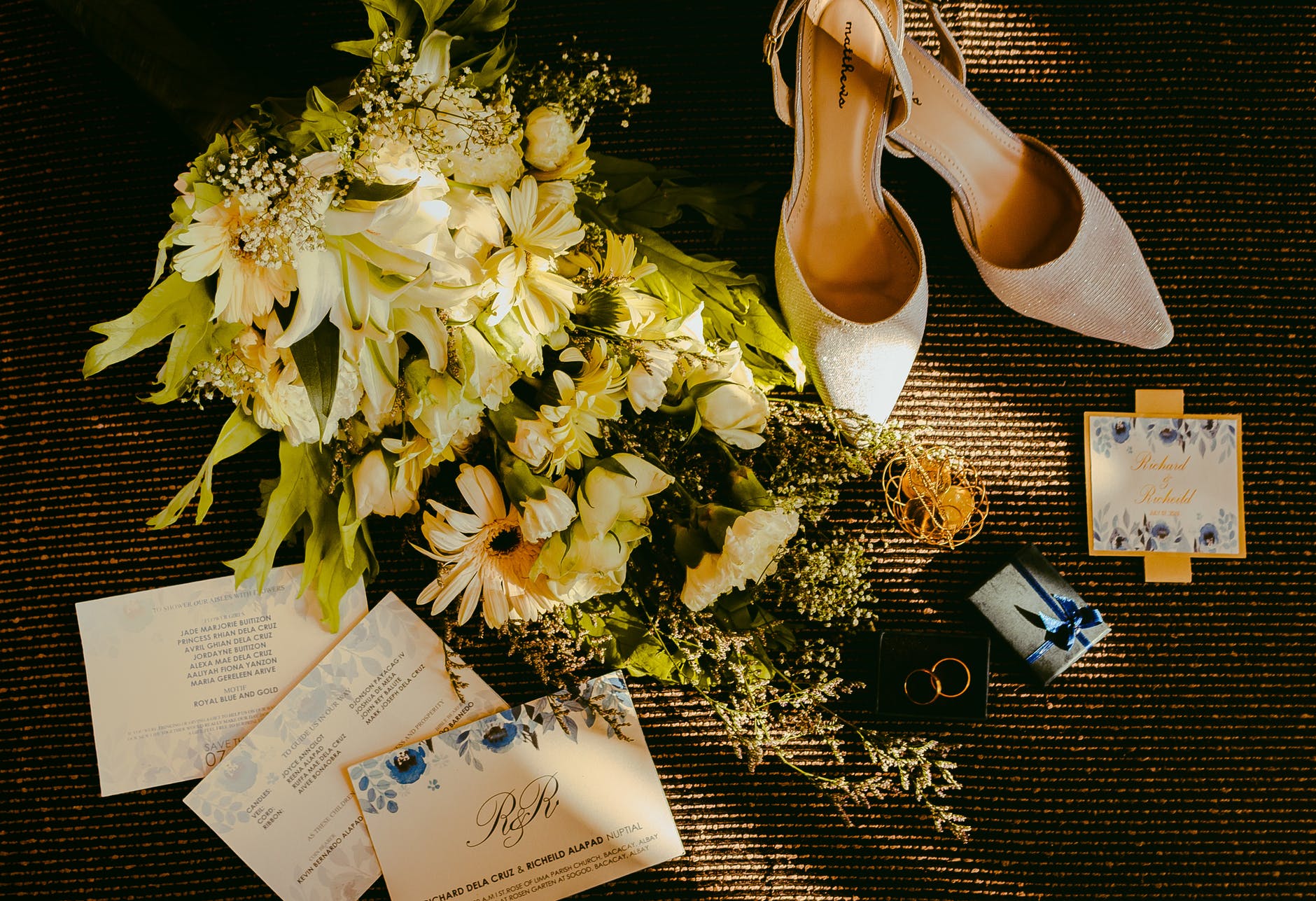
Photo by Abet Llacer on <a href="https://www.pexels.com/photo/pair-of-beige-shoes-beside-bouquet-1467193/" rel="nofollow">Pexels.com</a>
Planning a wedding can be incredibly stressful. There are so many things to think about to ensure that your day is perfect. It can be easy to dismiss something as small as the invitations, but they matter; they provide your guests with the first impression of the day. The truth is that wedding invites aren’t as straightforward as you might think, which is why we have put together the following information for you. Read on to learn more.
When to Send Out the Invites
Wedding invitations are usually preceded by save the date cards, which go out about six months before the wedding. However, save the dates, while traditional is not necessary. If you are using them, then the wedding invites should go out around two months before the wedding. If you have opted against them, then you can send your invites as early as four months before the big day.
You need to ensure that you have given your guests enough time to make any arrangements necessary to facilitate their attendance. This might be travel, accommodation, or time off work. Before you can send invites or save the dates, you need to have booked your venue.
The Guestlist
Before you can make any major decisions regarding your invitations, you need to work out your guest list. Sit down with your partner and come up with a list of all the people that you want to invite. Think about who you want to invite to the ceremony and who is for the reception only. Remember to take into account the size of households and whether you are offering any guests a plus one.
The Budget
You might be surprised to learn that wedding invitations can be quite pricey. The cost tends to depend on several factors, including the ink, the paper stock, the design, the font, whether they are handmade or printed and how many you want. These are all things that you need to think about. Springing for fancy invitations might seem like a good idea, but it could eat into your budget and take it away from another area of your wedding.
Printed invites are often cheaper, but you could also choose to make your own if you want to save money. If you opt for printed invites, you don’t have to worry about compromising on quality, especially if you use a service like Greenvelope. They have a huge range from classic wedding invitations to customizable templates. It is also a good idea to order a few extras just in case you make any mistakes when addressing them.
Choosing the Design
There are a lot of options when it comes to designing your invitations. If you are sending out save the dates, then you should try to keep the design consistent between the two pieces of wedding stationery. You should draw in elements from your wedding design. What colors are you going to choose, or do you have a theme in mind. You should start to introduce this through your invitations. Think about the level of formality that you expect from your guests for the big day and ensure that your invites set the right tone.
Most wedding invites tend to be 4.5 by 6.25 inches, and they are almost always rectangular in shape. However, just because this is the standard doesn’t mean that you have to adhere to it. There are brides who are opting for all sorts of original shapes and sizes. That being said, you do need to consider how easily they will be able to be posted out to your guests. This consideration goes hand in hand with its readability too. The font needs to be easily read by all your guests. You also need to proofread your invites to avoid typos.
What Should Go on the Invitations?
Obviously, there are a few things that need to go on the invite, such as your and your fiancé’s names, the date, times, the dress code that you want your guests to follow, and the location of the wedding too. After you have these essentials in place, there are some other things that you might want to include in your invites too. These extras tend to accompany your invites in separate cards as opposed to being part of the invitation itself.
Firstly, there is the RSVP card; these are important because they help you to keep track of who is coming and who can’t make your big day. If you have them to hand, you might want to also include the dinner options for your guests to choose from. You might also want to include directions to the venue and nearby lodgings for the guests coming from out of town in a separate card.
There are also the details of the rehearsal dinner – if you are having one. Or any other pre-wedding events that you want to make your guests aware of. If you aren’t inviting all of your guests to those events, then make sure they make their way into the right people’s invites! Finally, it isn’t the correct etiquette to include your wedding registry details on the invitation itself, so they should go on a separate card. When you list your wedding registry or gift expectations separately, your guests don’t feel as obligated or pressured to purchase you a gift from it, especially if it is a little bit out of their capabilities financially. A lot of couples today have a wedding website where they list all of this info, so you might want to simply include that as an extra card instead of all of the above.
The Bottom Line
The invitations to your wedding are an integral part of the planning phase; they also provide your guests with the first impression of your big day. In addition, they can help you to get more excited for the big day because they are often one of the first things that you do when planning for a wedding. Keep in mind the advice above to help you when it comes to choosing your wedding invites and what to put on them.


